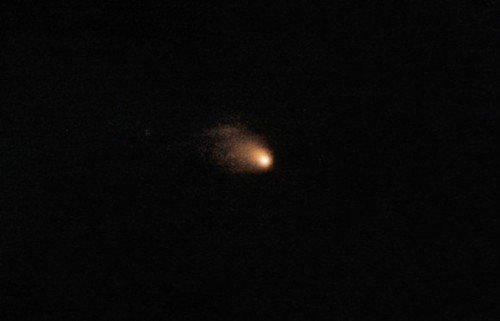
(ESO captured this picture of the comet from Chile – Photo Credit: Colin Snodgrass/ESO/ESA)
Comet 67P/Churyumov-Gerasimenko has recently become the subject of a number of images from the European Space Agency’s Rosetta spacecraft, which is currently in orbit around 67P, and although Rosetta’s photographs are very important, and impressive, astronomers still need to monitor the comet from Earth.
Despite the fact that Rosetta is very close to Comet 67P, ground-based observatories are still very useful to the ESA because they provide a “big picture” on what the comet looks like and how it is behaving. Rosetta is situated deep inside the ‘atmosphere’ of the comet, namely its coma, so in order to get a view of the whole comet, astronomers need to take a step back and use telescopes on Earth.
However, capturing an image of the comet from Earth is a challenge.
Until November 2014, 67P is only visible from the southern hemisphere and it is currently in a patch of the sky where it is camouflaged against the crowded star fields of the Milky Way. In addition, at more than 500 million km (310 million miles) from the Sun, the comet is still very faint and therefore quite hard to see, so it is only visible to large professional telescopes, such as the European Southern Observatory’s Very Large Telescope (VLT).
Astronomers are currently using VLT to take two images of the comet every night, to measure its total brightness, the size and shape of the coma, and to measure the composition of the coma. VLT captured this spectacular photograph of 67P recently, revealing that the comet is now clearly active and has a dusty coma extending at least 19,000 km.